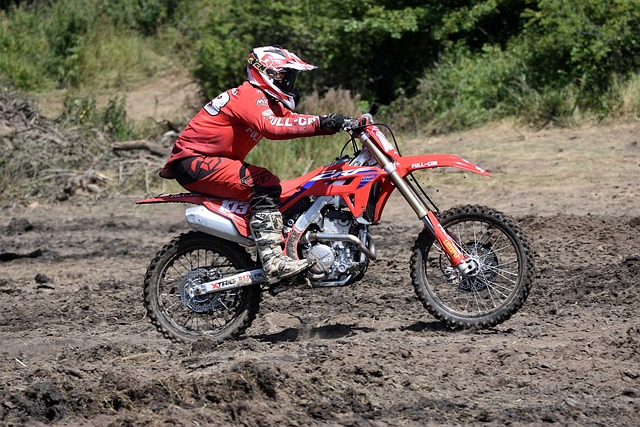Strength training is often framed in terms of building muscle through anabolic pathways, but a deeper look at the body’s response to intense exercise reveals a critical role for catabolism. Rather than being an opponent to growth, controlled catabolic activity can trigger adaptations that accelerate strength gains and speed recovery. Understanding how to harness catabolism enables athletes to fine‑tune training loads, nutrition, and recovery strategies for optimal performance.
The Basics of Catabolic Processes
Catabolism is the biochemical breakdown of complex molecules into simpler ones, releasing energy. In muscle, it involves proteolysis, glycogenolysis, and lipid mobilization. During heavy resistance sessions, ATP is consumed rapidly; when phosphocreatine stores are depleted, the body shifts to glycolysis and, when necessary, proteolysis. The breakdown products—amino acids, lactate, and fatty acids—serve as fuel for the next bout of activity or for repair processes.
Why Catabolism Matters for Strength Training
While the primary goal is to increase muscle mass, the muscle’s adaptive response to catabolic stress is what drives hypertrophy. When fibers are broken down, growth hormone, testosterone, and IGF‑1 levels rise, signaling satellite cells to proliferate and fuse with existing fibers. This cascade not only repairs damage but also expands the cross‑sectional area of the muscle, translating into greater force production.
“The extent of post‑exercise muscle protein breakdown determines the magnitude of the anabolic response,” notes Dr. Michael P. K. Smith, a leading researcher in sports physiology.
Timing Catabolic Events for Optimal Gains
Training volume and intensity dictate when catabolic peaks occur. High‑volume hypertrophy protocols (8–12 reps × 4–6 sets) create a sustained protein breakdown signal. Conversely, maximal strength programs (1–5 reps × 3–5 sets) trigger acute, short‑duration catabolism that stimulates powerful neural adaptations. Athletes can manipulate session sequencing—placing heavy lifts early when energy stores are high—to maximize catabolic stimulus before glycogen depletion drives a secondary proteolytic wave.
Nutrition: Fueling the Catabolic Engine
Catabolism is fuel‑dependent. Adequate carbohydrate intake prevents premature protein catabolism, whereas controlled carbohydrate restriction can enhance muscle protein breakdown, especially in lean, trained individuals. Protein timing also matters: consuming 20–25 grams of high‑quality protein within 30 minutes post‑exercise ensures rapid amino acid delivery for satellite cell activation, while a small dose of fast‑digesting carbs can amplify insulin secretion and reduce net protein loss.
- Pre‑workout meal: 0.3 g protein/kg body weight + 0.5 g carb/kg.
- Post‑workout shake: 20–30 g protein + 30 g simple carbs.
- Evening recovery: 25–30 g protein with a slower‑digesting carbohydrate source.
Supplements that Modulate Catabolism
Several supplements can fine‑tune the catabolic‑anabolic balance. Branched‑chain amino acids (BCAAs), particularly leucine, directly stimulate mTOR signaling, countering excessive protein breakdown. Creatine monohydrate increases intramuscular phosphocreatine, delaying glycogen depletion and allowing higher training volumes. Beta‑hydroxy beta‑butyrate (BHB) can act as an alternative fuel, sparing protein during high‑intensity bouts.
Recovery Strategies to Leverage Catabolic Signals
Rest is as important as stimulus. Sleep quality, hydration, and active recovery all influence how the body processes catabolic signals. During sleep, growth hormone release peaks, accelerating satellite cell activity. Light aerobic work or mobility drills on rest days help maintain blood flow, ensuring the removal of lactate and other metabolites that could otherwise impede protein synthesis.
Monitoring Catabolic Markers
While most lifters rely on subjective feedback, objective biomarkers can refine training programs. Serum cortisol and testosterone ratios, creatine kinase levels, and muscle soreness scales provide insight into the degree of catabolic stress. Tracking these variables over time helps prevent overreaching and informs when to dial back intensity or increase recovery.
Case Study: A 12‑Week Strength Cycle
Consider an athlete who implements a structured catabolic approach: two high‑volume hypertrophy sessions per week, one maximal strength session, and daily protein distribution of 1.8 g/kg. Over 12 weeks, the athlete records a 12% increase in bench press 1RM and a 10% rise in muscle circumference. Blood analyses reveal a consistent rise in post‑exercise IGF‑1, with cortisol peaks normalized by adequate sleep.
Potential Pitfalls and How to Avoid Them
Excessive catabolism can lead to muscle loss, decreased immune function, and chronic fatigue. Signs include prolonged soreness beyond 72 hours, unplanned weight loss, and decreased training performance. Mitigation strategies involve rotating training modalities, ensuring caloric balance, and integrating deload weeks every 4–6 cycles to reset hormonal profiles.
Myth‑Busting: Catabolism vs. Anabolism
Many believe catabolism is purely negative, yet it is an essential precursor to growth. The key lies in timing and volume—catabolic signals must be followed by sufficient anabolic stimuli (nutrition, sleep, and training stimulus). When mismanaged, catabolism can tip the scales toward catabolic dominance, but when strategically harnessed, it becomes a catalyst for strength development.
Practical Takeaways for Lifters
- Schedule heavy lifts when glycogen stores are high to maximize protein breakdown.
- Prioritize protein distribution: 20–30 g per meal, especially post‑workout.
- Incorporate recovery days with light mobility work to promote metabolite clearance.
- Monitor biomarkers (cortisol, CK) to adjust training loads proactively.
- Use supplements (BCAAs, creatine, BHB) strategically to modulate catabolic signals.
Future Directions in Catabolic Research
Emerging studies on muscle satellite cell priming, the role of the gut microbiome in amino acid absorption, and personalized training algorithms based on genetic markers promise to refine how athletes can control catabolism. As research progresses, the integration of wearable technology to track metabolic rates in real time could become a standard tool for tailoring individual training prescriptions.



